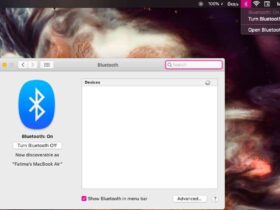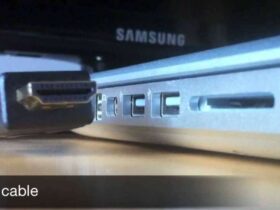Mac is one of the most popular operating systems used by millions of users worldwide. Although the macOS operating system is known for its stability, performance, and security, it can slow down over time or may face various issues that require you to reset your Mac. In such situations, a factory reset can help you restore your Mac to its original state, just like when you first bought it. In this article, we will explain how to factory reset Mac step-by-step.
Before you begin: Backup Your Data
Before you proceed with a factory reset, it is crucial to back up all your important data to prevent losing any essential files. You can create a backup by using Time Machine or any other third-party backup tool. Ensure that you save the backup to an external drive or cloud storage service like iCloud, Dropbox, or Google Drive. Once you have backed up your data, you can proceed with the factory reset.

Step 1: Restart Your Mac in Recovery Mode
To begin the factory reset process, you need to restart your Mac in Recovery Mode. Follow these steps:
- Shut down your Mac by clicking on the Apple logo in the top left corner and selecting “Shut Down.”
- Press and hold the Command + R keys on your keyboard.
- Keep holding the keys until you see the Apple logo or a spinning globe.
Once you enter Recovery Mode, you will see the macOS Utilities window.
Step 2: Erase the Hard Drive
Before you proceed with the factory reset, you need to erase your Mac’s hard drive to delete all the data and settings. Here are the steps to follow:
- Click on the “Disk Utility” option in the macOS Utilities window and click “Continue.”
- Select your Mac’s hard drive from the list on the left side of the Disk Utility window.
- Click on the “Erase” button at the top of the Disk Utility window.
- In the “Format” dropdown menu, select “Mac OS Extended (Journaled)” or “APFS” for newer Macs.
- Enter a name for the hard drive in the “Name” field.
- Click on the “Erase” button to erase the hard drive.
Note: Erasing the hard drive will delete all the data and settings from your Mac. Make sure you have backed up your data before proceeding.
Step 3: Reinstall macOS
Once you have erased your Mac’s hard drive, you can reinstall the macOS operating system to restore your Mac to its original state. Follow these steps:
- Click on the “Reinstall macOS” option in the macOS Utilities window and click “Continue.”
- Follow the instructions on the screen to select your language and agree to the terms and conditions.
- Select the hard drive you erased in Step 2 as the installation location.
- Click on the “Install” button to begin the reinstallation process.
- Wait for the installation to complete, which may take some time.
Note: Make sure your Mac is connected to a stable internet connection during the reinstallation process.
Step 4: Set up Your Mac
Once the reinstallation is complete, your Mac will restart, and you will see the setup assistant window. Follow the instructions to set up your Mac, including selecting your language, region, creating a user account, and more.
Conclusion
A factory reset is a useful method to restore your Mac to its original state and resolve any performance or software-related issues. However, before you proceed with the factory reset process, make sure you have backed up all your important data to prevent any loss. Follow the above steps to factory reset your Mac and restore it to its original state.
Additional Tips and Considerations
Here are some additional tips and considerations to keep in mind when performing a factory reset on your Mac:
- Make sure you have the latest macOS version installed on your Mac. It’s always a good idea to keep your operating system up-to-date to ensure the best performance and security.
- If you want to keep your personal files and data but restore your Mac to its original settings, you can choose the “Restore from Time Machine Backup” option in the macOS Utilities window instead of erasing the hard drive.
- If you’re selling or giving away your Mac, it’s important to securely erase your hard drive to prevent any personal data from being accessed by others. In this case, you can use the “Security Options” button in the Disk Utility window to choose from various secure erase options.
- If you’re using a Mac with Apple Silicon, such as the M1 chip, the factory reset process is slightly different. Instead of holding the Command + R keys, you need to press and hold the power button until the startup options appear. From there, select “Options” and then “Reinstall macOS.”
- In case you face any issues during the factory reset process or have any questions, you can always refer to Apple’s official support website or contact their customer support for assistance.
Final Thoughts
Performing a factory reset on your Mac is a straightforward process that can help you restore your Mac to its original state and resolve various issues. By following the above steps and considerations, you can ensure that your factory reset process goes smoothly and that you don’t lose any important data. Remember to always backup your data before proceeding with a factory reset and keep your Mac’s operating system up-to-date for optimal performance and security.












Leave a Reply